-
 Bitcoin
Bitcoin $108,960.1513
0.84% -
 Ethereum
Ethereum $2,578.1548
2.56% -
 Tether USDt
Tether USDt $1.0001
-0.02% -
 XRP
XRP $2.2702
1.71% -
 BNB
BNB $662.6676
1.28% -
 Solana
Solana $152.6556
3.53% -
 USDC
USDC $0.9999
0.00% -
 TRON
TRON $0.2865
0.80% -
 Dogecoin
Dogecoin $0.1726
5.60% -
 Cardano
Cardano $0.5883
2.60% -
 Hyperliquid
Hyperliquid $39.9405
3.10% -
 Sui
Sui $2.9147
1.24% -
 Bitcoin Cash
Bitcoin Cash $493.8494
2.04% -
 Chainlink
Chainlink $13.6129
3.68% -
 UNUS SED LEO
UNUS SED LEO $9.0589
0.46% -
 Avalanche
Avalanche $18.2965
2.82% -
 Stellar
Stellar $0.2493
4.35% -
 Shiba Inu
Shiba Inu $0.0...01178
2.25% -
 Toncoin
Toncoin $2.8078
-6.81% -
 Hedera
Hedera $0.1604
4.96% -
 Litecoin
Litecoin $87.8270
1.20% -
 Monero
Monero $320.4173
1.87% -
 Polkadot
Polkadot $3.4079
1.81% -
 Dai
Dai $1.0000
0.00% -
 Ethena USDe
Ethena USDe $1.0000
-0.01% -
 Bitget Token
Bitget Token $4.4122
0.50% -
 Uniswap
Uniswap $7.3890
1.84% -
 Aave
Aave $286.0205
5.66% -
 Pepe
Pepe $0.0...01012
4.35% -
 Pi
Pi $0.4643
3.14%
What are LBank's API transaction restrictions?
LBank's API transaction restrictions include rate, withdrawal, and trading limits to ensure platform stability and security; users must monitor usage to comply.
Apr 25, 2025 at 08:15 am
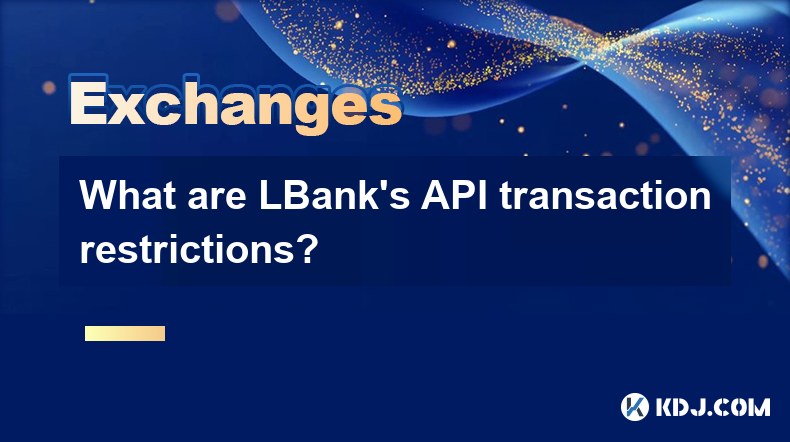
LBank is a prominent cryptocurrency exchange platform that offers a wide range of trading options and services to its users. One of the key features that LBank provides is its API, which allows users to automate their trading strategies, manage their portfolios, and execute trades more efficiently. However, like any other exchange, LBank has specific API transaction restrictions that users need to be aware of to ensure smooth and compliant operations. This article will delve into the details of LBank's API transaction restrictions, helping users understand the limits and guidelines they must follow.
Understanding LBank's API
Before diving into the specifics of transaction restrictions, it's essential to understand what LBank's API is and how it functions. LBank's API is a set of protocols and tools that allow developers to interact with the exchange's services programmatically. This means users can create custom applications, bots, or scripts to automate trading, retrieve market data, and manage their accounts without manual intervention. The API is designed to be robust and secure, ensuring that users can rely on it for their trading needs.
Types of API Transaction Restrictions
LBank imposes several types of API transaction restrictions to maintain the integrity and security of its platform. These restrictions can be broadly categorized into rate limits, withdrawal limits, and trading limits. Each of these categories has specific rules and guidelines that users must adhere to.
Rate Limits
Rate limits are one of the primary API transaction restrictions that LBank enforces. These limits are in place to prevent abuse of the API and ensure that the platform remains stable and responsive for all users. LBank's rate limits are typically measured in requests per second (RPS) or requests per minute (RPM). For example, the exchange might allow a maximum of 10 requests per second for certain API endpoints.
- Public Endpoints: These are endpoints that do not require authentication, such as retrieving market data or ticker information. The rate limits for public endpoints are generally higher, as they are less likely to be abused.
- Private Endpoints: These endpoints require authentication and are used for actions like placing orders, withdrawing funds, or managing account settings. The rate limits for private endpoints are typically stricter to prevent unauthorized access and potential security breaches.
Withdrawal Limits
Withdrawal limits are another crucial aspect of LBank's API transaction restrictions. These limits are designed to protect users' funds and prevent large-scale withdrawals that could destabilize the platform. LBank sets daily, weekly, and monthly withdrawal limits for different cryptocurrencies.
- Daily Limits: For example, a user might be allowed to withdraw up to 2 BTC per day through the API.
- Weekly Limits: The weekly limit might be set at 10 BTC, ensuring that users cannot exceed this amount over a seven-day period.
- Monthly Limits: Monthly limits are typically higher, such as 30 BTC, providing users with more flexibility over a longer period.
It's important for users to monitor their withdrawal activities and ensure they stay within these limits to avoid any disruptions to their trading activities.
Trading Limits
Trading limits are also part of LBank's API transaction restrictions. These limits are in place to manage the volume of trades that can be executed through the API, ensuring that the platform can handle the load and maintain fair trading conditions for all users.
- Order Limits: LBank might impose limits on the number of orders that can be placed within a certain timeframe. For instance, a user might be allowed to place up to 100 orders per minute.
- Volume Limits: There might also be limits on the total trading volume that can be executed through the API. For example, a user might be restricted to trading up to 100 BTC per day.
These trading limits help prevent market manipulation and ensure that the platform remains stable and secure for all users.
How to Check Your API Transaction Limits
To ensure compliance with LBank's API transaction restrictions, users need to be aware of their current limits and monitor their usage. LBank provides tools and endpoints within its API to help users check their limits and usage.
- API Documentation: LBank's official API documentation provides detailed information on the various transaction limits and how to check them.
- Rate Limit Headers: When making API requests, LBank includes rate limit headers in the response, such as
X-RateLimit-Limit,X-RateLimit-Remaining, andX-RateLimit-Reset. These headers provide real-time information on the user's current rate limits and usage. - Account Management Endpoints: LBank offers specific endpoints that allow users to retrieve their current withdrawal and trading limits. For example, a user can use the
/api/v1/user/withdrawLimitendpoint to check their withdrawal limits.
Best Practices for Managing API Transaction Restrictions
To effectively manage LBank's API transaction restrictions, users should follow several best practices. These practices help ensure that users stay within the limits and avoid any potential issues.
- Monitor Usage: Regularly check your API usage and remaining limits using the tools provided by LBank. This helps you stay aware of your current status and plan your trading activities accordingly.
- Implement Retry Logic: When dealing with rate limits, implement retry logic in your applications to handle cases where requests are rejected due to exceeding the limits. This can help ensure that your trading strategies continue to run smoothly.
- Optimize Requests: Optimize your API requests to minimize the number of calls you make. For example, batching multiple orders into a single request can help you stay within the rate limits.
- Stay Informed: Keep up to date with any changes to LBank's API transaction restrictions by regularly reviewing the official documentation and announcements from the exchange.
Common Issues and Solutions
Users may encounter various issues related to LBank's API transaction restrictions. Understanding these common issues and their solutions can help users navigate the platform more effectively.
- Exceeding Rate Limits: If you exceed the rate limits, your API requests will be rejected. To solve this, implement retry logic with exponential backoff to handle these rejections gracefully.
- Hitting Withdrawal Limits: If you hit your withdrawal limits, you will not be able to withdraw more funds until the limits reset. Plan your withdrawals in advance and stay within the daily, weekly, and monthly limits.
- Reaching Trading Limits: If you reach your trading limits, you will not be able to place more orders until the limits reset. Monitor your trading volume and adjust your strategies to stay within the limits.
Frequently Asked Questions
Q: Can I request an increase in my API transaction limits from LBank?
A: Yes, LBank allows users to request an increase in their API transaction limits. You can submit a request through the platform's support channels, providing details about your trading activities and why you need higher limits. LBank will review your request and may grant an increase based on your account history and compliance with their policies.
Q: How can I find out if my API requests are being rate-limited?
A: LBank includes rate limit headers in the API response, such as X-RateLimit-Limit, X-RateLimit-Remaining, and X-RateLimit-Reset. By checking these headers, you can determine if your requests are being rate-limited and how long you need to wait before making more requests.
Q: Are there any tools or libraries that can help me manage LBank's API transaction restrictions?
A: Yes, there are several third-party tools and libraries available that can help you manage LBank's API transaction restrictions. These tools often include features like automatic rate limit handling, retry logic, and monitoring of your API usage. Some popular options include libraries like CCXT and custom scripts developed by the community.
Q: What happens if I exceed my withdrawal limits on LBank?
A: If you exceed your withdrawal limits on LBank, your withdrawal requests will be rejected until the limits reset. You will need to wait for the daily, weekly, or monthly limits to reset before you can withdraw more funds. It's important to plan your withdrawals carefully to avoid hitting these limits.
Disclaimer:info@kdj.com
The information provided is not trading advice. kdj.com does not assume any responsibility for any investments made based on the information provided in this article. Cryptocurrencies are highly volatile and it is highly recommended that you invest with caution after thorough research!
If you believe that the content used on this website infringes your copyright, please contact us immediately (info@kdj.com) and we will delete it promptly.
- Babylon, Bitcoin, and the EVM Mainnet: A New Era for BTCFi?
- 2025-07-07 16:30:11
- Queen Elizabeth Coin Sells for £31,000: A Royal Fortune in Your Pocket?
- 2025-07-07 16:30:11
- Altcoin Season on the Horizon? Michael van de Poppe Eyes a Potential 76% Surge
- 2025-07-07 16:35:12
- Pi Network Price Prediction: Is $1,000 Realistic?
- 2025-07-07 14:30:13
- Cryptocurrency Fraud: Secret Service Issues Warning Amidst Rising Scams
- 2025-07-07 14:30:13
- XRP Price & Bitcoin to $3.4M by 2030? A NYC Perspective
- 2025-07-07 14:50:12
Related knowledge
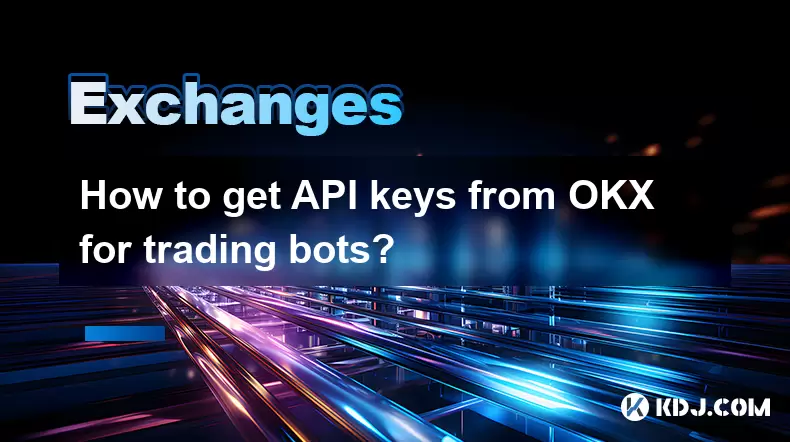
How to get API keys from OKX for trading bots?
Jul 03,2025 at 07:07am
Understanding API Keys on OKXTo interact with the OKX exchange programmatically, especially for building or running trading bots, you need to obtain an API key. An API (Application Programming Interface) key acts as a secure token that allows your bot to communicate with the exchange's servers. On OKX, these keys come with customizable permissions such ...
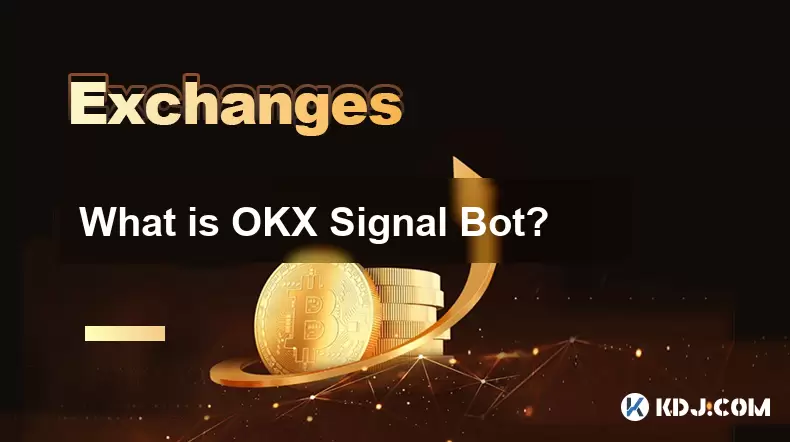
What is OKX Signal Bot?
Jul 02,2025 at 11:01pm
Understanding the Basics of OKX Signal BotThe OKX Signal Bot is a feature within the OKX ecosystem that provides users with automated trading signals and execution capabilities. Designed for both novice and experienced traders, this bot helps identify potential trading opportunities by analyzing market trends, technical indicators, and historical data. ...
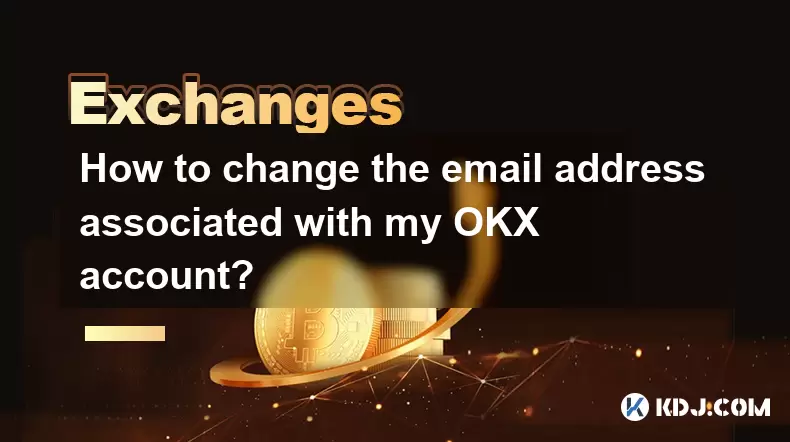
How to change the email address associated with my OKX account?
Jul 07,2025 at 08:07am
How to Change the Email Address Associated with My OKX Account?Changing the email address associated with your OKX account is a crucial process that ensures you maintain control over your digital assets and account security. Many users may find themselves needing to update their registered email due to various personal or technical reasons, such as swit...
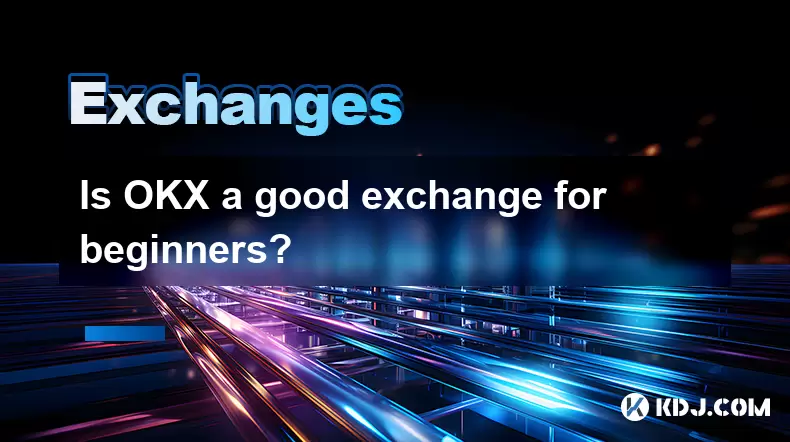
Is OKX a good exchange for beginners?
Jul 03,2025 at 05:00pm
What Is OKX and Why Is It Popular?OKX is one of the leading cryptocurrency exchanges globally, known for its robust trading infrastructure and a wide variety of digital assets available for trading. It supports over 300 cryptocurrencies, including major ones like Bitcoin (BTC), Ethereum (ETH), and Solana (SOL). The platform has gained popularity not onl...
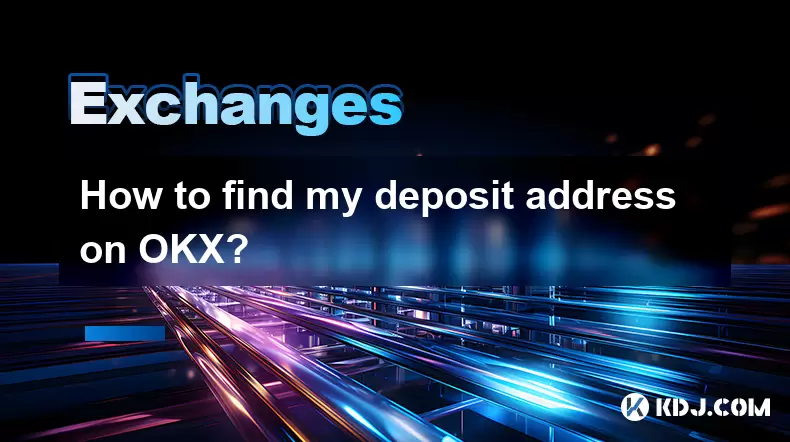
How to find my deposit address on OKX?
Jul 06,2025 at 02:28am
What is a Deposit Address on OKX?A deposit address on OKX is a unique alphanumeric identifier that allows users to receive cryptocurrencies into their OKX wallet. Each cryptocurrency has its own distinct deposit address, and using the correct one is crucial to ensure funds are received properly. If you're looking to transfer digital assets from another ...
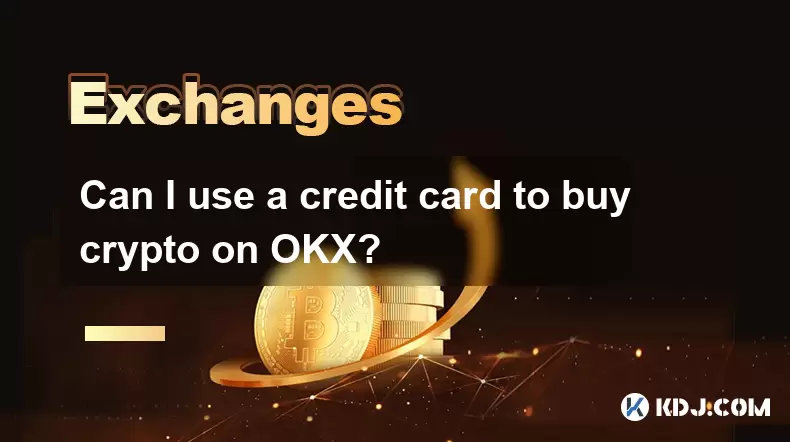
Can I use a credit card to buy crypto on OKX?
Jul 04,2025 at 04:28am
Understanding OKX and Credit Card PaymentsOKX is one of the leading cryptocurrency exchanges globally, offering a wide range of services including spot trading, derivatives, staking, and more. Users often wonder whether they can use a credit card to buy crypto on OKX, especially if they are new to the platform or looking for quick ways to enter the mark...

How to get API keys from OKX for trading bots?
Jul 03,2025 at 07:07am
Understanding API Keys on OKXTo interact with the OKX exchange programmatically, especially for building or running trading bots, you need to obtain an API key. An API (Application Programming Interface) key acts as a secure token that allows your bot to communicate with the exchange's servers. On OKX, these keys come with customizable permissions such ...

What is OKX Signal Bot?
Jul 02,2025 at 11:01pm
Understanding the Basics of OKX Signal BotThe OKX Signal Bot is a feature within the OKX ecosystem that provides users with automated trading signals and execution capabilities. Designed for both novice and experienced traders, this bot helps identify potential trading opportunities by analyzing market trends, technical indicators, and historical data. ...

How to change the email address associated with my OKX account?
Jul 07,2025 at 08:07am
How to Change the Email Address Associated with My OKX Account?Changing the email address associated with your OKX account is a crucial process that ensures you maintain control over your digital assets and account security. Many users may find themselves needing to update their registered email due to various personal or technical reasons, such as swit...

Is OKX a good exchange for beginners?
Jul 03,2025 at 05:00pm
What Is OKX and Why Is It Popular?OKX is one of the leading cryptocurrency exchanges globally, known for its robust trading infrastructure and a wide variety of digital assets available for trading. It supports over 300 cryptocurrencies, including major ones like Bitcoin (BTC), Ethereum (ETH), and Solana (SOL). The platform has gained popularity not onl...

How to find my deposit address on OKX?
Jul 06,2025 at 02:28am
What is a Deposit Address on OKX?A deposit address on OKX is a unique alphanumeric identifier that allows users to receive cryptocurrencies into their OKX wallet. Each cryptocurrency has its own distinct deposit address, and using the correct one is crucial to ensure funds are received properly. If you're looking to transfer digital assets from another ...

Can I use a credit card to buy crypto on OKX?
Jul 04,2025 at 04:28am
Understanding OKX and Credit Card PaymentsOKX is one of the leading cryptocurrency exchanges globally, offering a wide range of services including spot trading, derivatives, staking, and more. Users often wonder whether they can use a credit card to buy crypto on OKX, especially if they are new to the platform or looking for quick ways to enter the mark...
See all articles

























































































